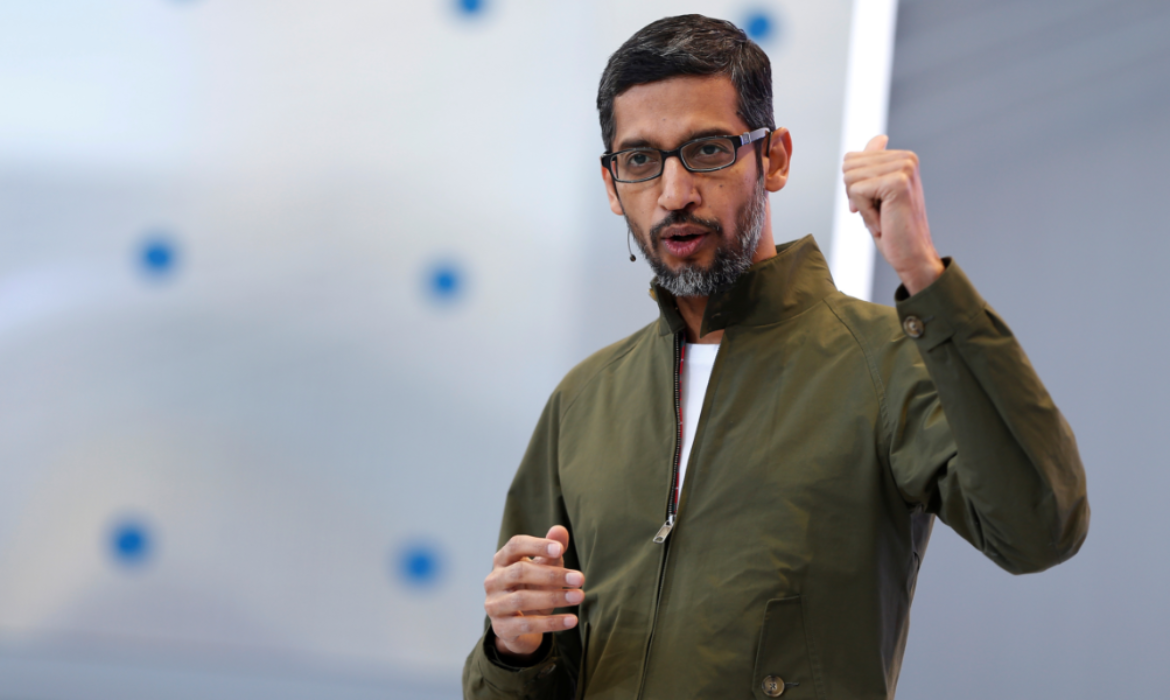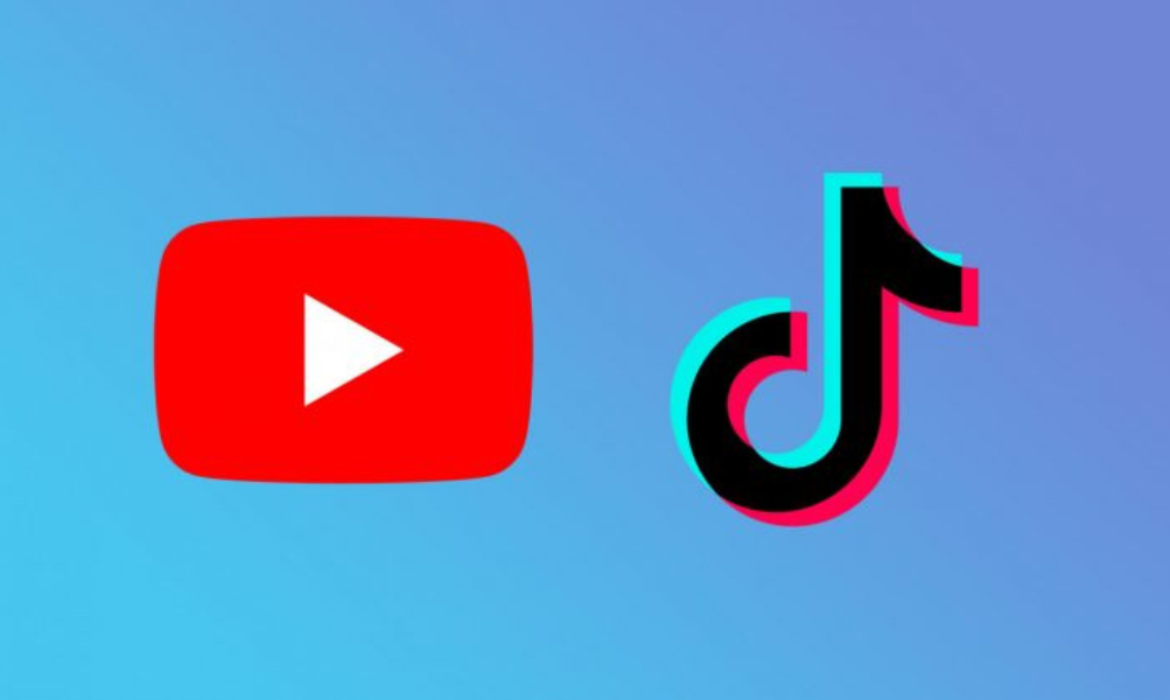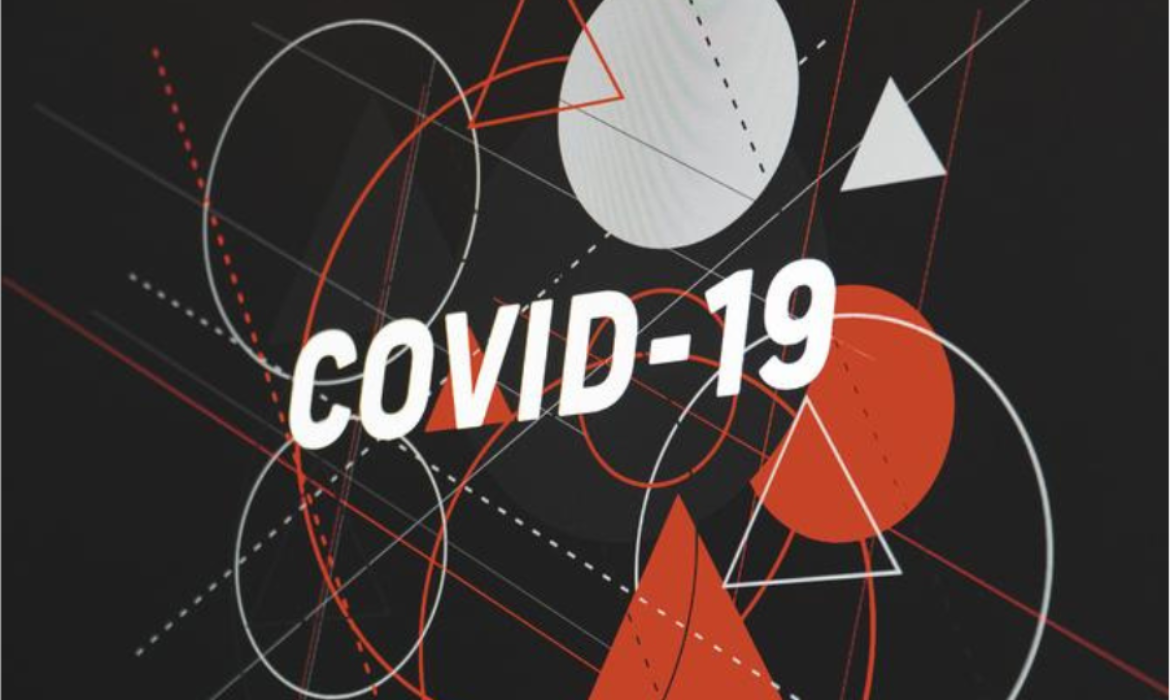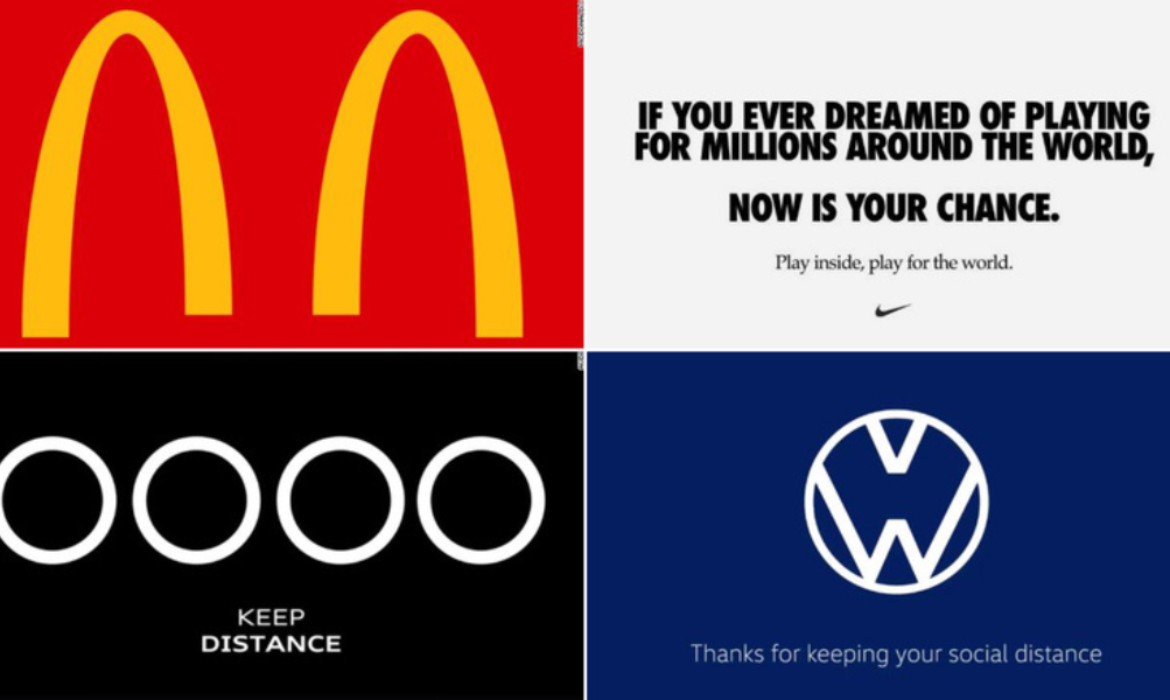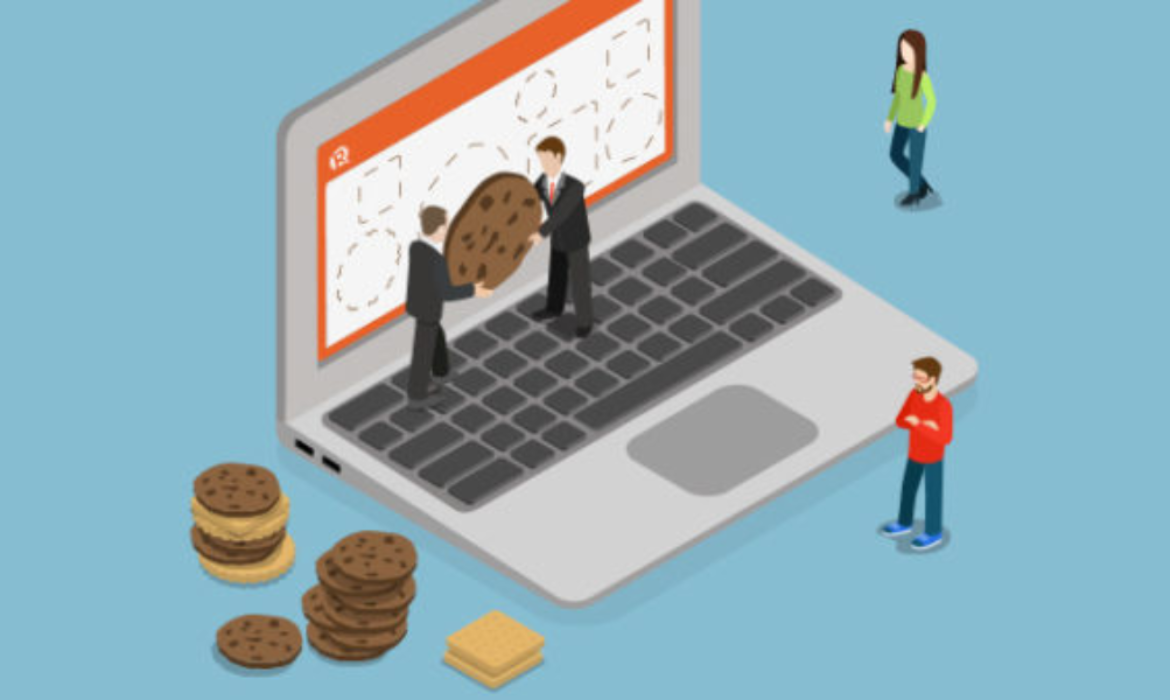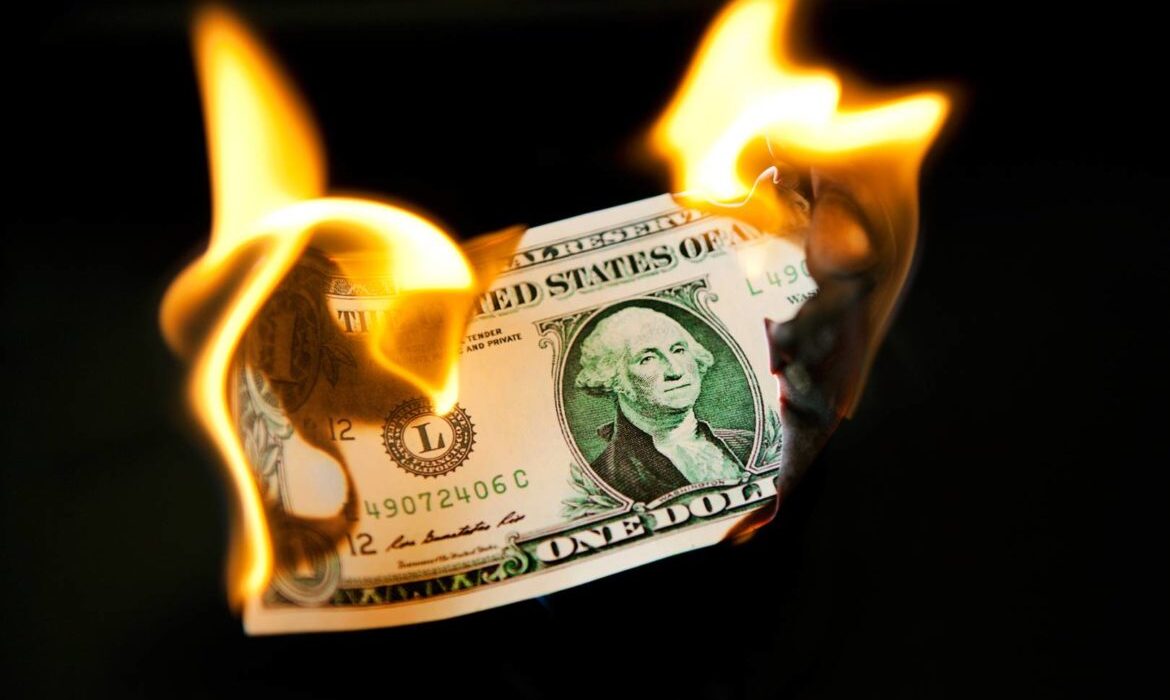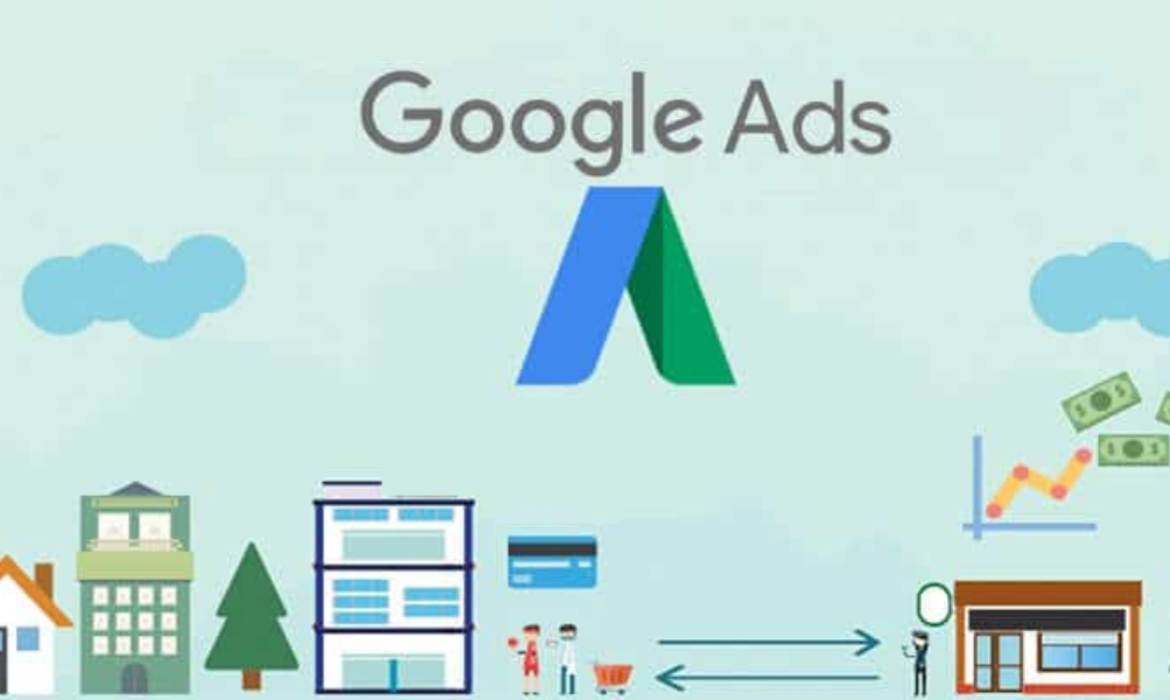Google pledges $800 million to coronavirus relief, including Ad credits
Google announced in a blog post that it will be offering $340 million as free ad credits to small and medium businesses that have an account with them. It is committing more than $800 million which will be used towards a range of charities and to support initiatives to help those affected by the global pandemic.
Google CEO Sundar Pichai explained:
“As the coronavirus outbreak continues to worsen around the world, it’s taking a devastating toll on lives and communities. To help address some of these challenges, today we’re announcing a new $800+ million commitment to support small- and medium-sized businesses (SMBs), health organizations and governments, and health workers on the frontline of this global pandemic.”
Google’s commitment includes the following key areas:
- A $250 million in ad grants will be used to help the World Health Organization and other more than 100 government agencies globally to provide information about the pandemic.
- A $200 million investment fund will be set up that will support NGOs and financial institutions to provide small businesses with capital. This is in addition to the $15 million in cash grants Google.org provides to non-profits to help bridge gaps for SMB’s.
- A $340 million in Google Ad credits to small and midsize business owners with active Google ad account over the past year. Credit notifications will appear in their Google Ads accounts and can be used at any point until the end of 2020 across our advertising platforms”, as mentioned on the blog.
- $20 million in Google Cloud Credits for academic institutions and researchers as they leverage Google’s computing capabilities and infrastructure as they study potential therapies, vaccines and identify new ways to combat COVID-19.
- Financial support and expertise to help increase production capacity for lifesaving equipment which includes masks and ventilators.
In addition to this, Google has increased the gift matching support program for its employees who donate to charities. Pichai said that employees from across Alphabet including Google, Verily and X, are
“bringing engineering, supply chain, and healthcare expertise to facilitate increased production of ventilators, working with equipment manufacturers, distributors and the government in this effort.”
Earlier this month, Verily, Google’s sister company launched a coronavirus testing screening website with 1,000 Google volunteers to test people with symptoms. It’s a significant commitment from the tech giant and growing contributions towards a social cause.
Over the past few weeks, we have seen major contributions for COVID-19 from Silicon giants like Apple, Facebook, LinkedIn, Twitter, Salesforce has also funded to relieve the economic stress amidst the global pandemic.
YouTube Shorts: Will it be Able to Capture TikTok’s Audience?
- TikTok is incredibly popular for lip-syncing and dancing videos.
- TikTok had nearly 1.7 billion downloads as of February 2020.
- Many have tried to imitate Tik Tok’s features but none could reproduce the success.
- YouTube is reportedly soon launching a short video sharing feature ‘Shorts’ which aims to rival TikTok but not as a standalone product.
YouTube was always the cool kid on the block with little real competition since inception. There are plenty of other video platforms like Dailymotion, Vimeo, and Veoh that aren’t a threat to YouTube until TikTok came in. TikTok is a wildly popular app with over a billion downloads with Gen Z and recently witnessed a surge in its popularity during coronavirus quarantines especially with kids and young adults who are bored at home.

Image Credit: Sensor Tower
Can YouTube overtake TikTok Audience and Popularity?
YouTube, a Google-owned company has been the most widely used video-sharing platform in the world for 15 years with 2 billion monthly users. Even though 81% of 15-25 years old using YouTube, it doesn’t have the short-form content. Therefore, it is eager to capture the younger audience segment who are crazy about short-form videos around music that makes Tik Tok a hit. As a result, YouTube is reportedly working on a new feature ‘Shorts’ that it hopes will make a dent on the surging popularity of Tik Tok and keep more people on the platform.
The website The Information reported that YT is working on its own short video feature ‘Shorts’ similar to TikTok operation within the YouTube app. According to the site:
“Shorts will include a feed of brief videos posted by users inside the Google-owned app and will take advantage of the video service’s catalog of licensed music, songs from which will be available to use as soundtracks for the videos created by users.”
MSNBC’s Dylan Byers additionally confirmed on Twitter shortly after The Information’s report was live.
YouTube’s new features can have advantages over TikTok. For instance, it has extensive music licensing agreement in place which implies that there would be an array of music options to choose from short clips. It has a larger audience base, so influencers will find an advantage to stay over the platform as they would get access to reach more potential viewers. And lastly, YouTube has better monetization policies and systems in place which is a huge advantage for the influencers.
If the service is easily monetized by the content creators, the associated advertising revenue could fund high-quality content in a short video, which can attract more viewers- a win-win situation for all. On the contrary, TikTok doesn’t offer a way to monetize videos for content creators and ad offering is in pipeline.
Is YouTube Shorts different from other TikTok competitors?
Many established tech companies in Silicon Valley have tried to replicate the success of TikTok but in vain. Facebook tried Lasso in South America, a teen focused short video format app which has yet to gain traction. Instagram and Snapchat attempted to adopt some of TikTok’s features. Byte, launched by the founder of Vine witnessed some early success but is still young. However, none of the’ newly inspired TikTok apps’ have taken off the original.
YouTube has also previously replicated the feature that resembled Instagram stories in 2018 which was successful for creators increasing the subscriber base on average by 8% over those who didn’t use the feature.
The YouTube Shorts app release date is expected to be the end of the year. It would be interesting to see whether TikTok users migrate to YouTube Shorts and YouTube can capture some thunder from the rival. It will be exciting to see how things develop and as a result, TikTok develops a monetization system and comes up with ad offering.
COVID 19 Effect : How Could It Impact The Digital Ad Spend
The Great Recession was the lowest point in the history of advertising. The only time digital spend dropped in absolute terms was in 2009. However, according to the IAB survey of nearly 400 media buys and brands, 74 percent of buy-side decision-makers think coronavirus pandemic will have a larger impact on the digital ad spend than the 2008 financial crisis. The struggle against the ongoing coronavirus pandemic looks grim among the buy-side decision-makers.
Meanwhile, nearly a quarter of all respondents have paused all ad spend for the first and second quarters while another 46 percent have adjusted their media spend during the first half of the year as researched conducted by Interactive Advertising Bureau.
As quoted in Forbes, IAB President David Cohen said,
“This is what happens in times of crisis. Typically marketers will press pause for a moment, take a breath, assess the situation, replay and reevaluate.”
The COVID-19 crisis is going to have a material impact on the calendar year 2020. According to the report, the buy-side expects an increase in spending during May/June but no rebound for the final six months of the year.
The report suggests digital advertising to fair better than any other medium. Digital ad spends from March to June down by 33% compared to traditional media declined by 39%. Traditional out-of-the home advertising is highly affected by an estimated ad spend down by 51% for March and April and 41% for May and June. This makes sense considering people are home in self-isolation across countries, there would be fewer people to see billboards and digital displays.
With all the changes in the ad spend, 63 percent of advertisers are adjusting their messaging to focus on mission-based marketing and cause-related marketing. Meanwhile, tactical changes are also happening as a 38 percent plan to increase audience targeting and 35 percent plan to increase device marketing for OTT and CTV.
Media consumption is going to increase with this stay-at-home and work-from-home. The report also reflects that the crisis is going to hit the annual Upfronts in late April and May with Disney, Hulu, and Discovery pulling out as 73 percent of buyers said COVID-19 will impact their spending plans for 2020 and 2021. While 20 percent expect a decrease in their Upfront spends versus original plans.
Despite the bleak picture over the next few months, two-thirds of buyers are undecided for making any ad spend changes in Q3 and Q4 and 25 percent plan to make changes due to COVID-19. The IAB surveyed the marketers about the milestones they will be watching to calibrate their decisions. 65 percent said they will be watching the quarantine status while 49 percent are focused on the number of coronaviruses cases. Other milestones amongst the top five were business openings and closing (47%) and stock market (44%).
Speaking to Forbes, Sue Hogan, the IAB’s senior vice president of measurement expanded on the point,
“I would say that I think the optimism right now for the second half of 2020 is heartening,”
He further added,
“There’s definitely a pendulum swing in the minds of buyers to move from a pretty tight decrease in ad spend or pause entirely to what we hope will be close to planned by end of year.”
Brands Get Creative With Their Advertisements To Encourage Social Distancing
Who says Social Distancing can’t be creative? With creative advertisements, it surely can be!
- After Juan Delcan and Valentina Izaguirre’s Safety Match Art went viral, many iconic brands are getting creative with their advertisements to promote the importance of social distancing and creating advertisements to stay home during the coronavirus pandemic.
- As the situation around the world intensifies, the citizens of the world are called to understand and follow hygiene practices, self-isolation, and social distancing. Understandably, it is a challenging phase and including these behaviours in our day-to-day life isn’t easy. Unfortunately, there have been cases of defiance and indifference.
- Therefore, brands have stepped up to spread awareness on social distancing by altering the most essential element of their existence – Logos and slogans. While some consider it as a marketing gimmick and others as an incredible way to spread a vital message.
Whichever side you belong, take a look at brands like Audi, Fevicol, Nike and others spreading the message of “SOCIAL DISTANCING” on social media with their creative advertisements.
AUDI and VOLKSWAGEN
Held under the same ownership, Audi and Volkswagen tweaked their logos to promote social distancing messages on their social media accounts.
- AUDI
Audi took to Twitter to share a short video with a message “Stay at home, keep your distance, be healthy, support each other – we are in this together”. The post shows the interlocked rings of the luxury brand’s logo stretching out so it gets disconnected from each other to be four separate rings.
Keep your distance – stay together. Only together we make the difference. #AudiTogether pic.twitter.com/othOsjRRYA
— Audi (@AudiOfficial) March 26, 2020
- VOLKSWAGEN
Volkswagen also shared a similar video with a message “Thanks for keeping your social distance!” and separated the iconic V and W.
We are #Volkswagen. Thanks for keeping your social distance! #FlattenTheCurve pic.twitter.com/JeY27epjhl
— Volkswagen News (@volkswagen) March 23, 2020
MERCEDES BENZ
The automotive brand unveiled a logo on Instagram account designed by one of its employees Marcel Hobrath. The logo features an iconic three-pronged star implying to keep a safe distance from the outer circle.
https://www.instagram.com/p/B-XZizpC8DX/?utm_source=ig_embed
COCO-COLA
Coco-Cola is presently running its ad in New York’s Time Square which shows the usual interlocked letters are spaced out from each other with a slogan reading “Staying apart is the best way to stay united.”
Before experts jump to any conclusion that the brand is taking advantage of the situation, Coco-Cola through its Coco-Cola foundation has pledged to donate USD 13.5 million to five non-profit organizations in Canada and the United States for those involved in helping the affected to the pandemic.

Image Credit: The Coco-Cola Company
McDonald’s (BRAZIL)
One of the controversial logo changes from McDonald’s Brazil, which shows its iconic golden arches are pulled apart as posted on its Facebook page. Designed by ad agency DPZ&T, it explained that the distance between the customers and the company is temporary so that we can stay always together. McDonald’s is providing food through delivery and drive-thru.
It faced a backlash from consumers including Bernie Sanders, who tweeted about the company’s sick leave policy for its employees.

Image Credit: McDonald’s Facebook Page
IKEA
In Israel, advertising agency McCann designed IKEA assembly manual with a caption “Stay Home” showing a picture of the house with a key, lock and toilet paper.

Image Credit: Dezeen
CHIQUITA
The international provider of bananas and other fruits produce tweaked its logo on Instagram. It posted the logo without the iconic mascot and captioned the post saying she was “already home” and asked the followers “to do the same and protect yourself.” The social accounts of the brand are operated by Portugal-based digital agency Alice from the Young Network group. This post received positive feedback including heart emojis and claps.
https://www.instagram.com/p/B-E7kQjIj1D/?utm_source=ig_embed
ADIDAS
Sportswear manufacturer started a series #hometeam virtually to encourage everyone to be creative and fit while staying indoors.

Image credit: Money Control
MUCINEX
Mucinex created a series of informational ads promoting facts about COVID-19 to combat misinformation. The campaign promotes hand sanitization, maintain at least 6 feet distance, refrain from touching faces and debunks many myths. Each campaign directs people to visit website COVID-19facts.com run by the World Health Organization, John Hopkins and international experts.
Created by McCann New York and McCann Health New York in association with award-winning art illustrator Noma Bar, Mucinex’s campaign will run across all mediums to help calm people and provide the right information.

Image Credit: Money Control
NIKE
Nike didn’t tweak its logo but launched a social media campaign with a global roster of star athletes which includes NBA player LeBron James and golfer Tiger Woods. The campaign shows how these sports stars are practicing social distancing by “playing inside.”
Nike had to closed several of its global stores due to the pandemic. Many sports events like NBA and Olympics have been postponed or canceled. Earlier a logo was redesigned by Slovenia based creative director Jure Tovaljan with a catchphrase modified to “Just Don’t Do It” but the company opted to stick to its identity.
https://www.instagram.com/p/B-AguSsAL0o/?utm_source=ig_embed
MERCADO LIBRE
Argentina Ecommerce platform tweaked its logo from changing handshakes to elbow bumps.

Image Credit: India Television
FEVICOL
The world’s strongest adhesive product owned by Indian company Pidilite Industries tweaked its logo which showed two elephants pulling away from each other with a tagline in Hindi that means “For future bonding, maintain some distance today.”
https://www.instagram.com/p/B91G66rlS3q/?utm_source=ig_embed
Surely, this unique initiative of creative advertisements by brands can help to bring awareness to social distancing and encourage more people to adopt the practice.
AdLedger, Madhive Releases Study on Ad Tech Industry, Only 6% Satisfied with Current Digital Ecosystem
A survey by Industry Index suggests that just 6% of the industry is satisfied with the current digital advertising ecosystem. The survey was released by Adledger, non-profit research and development consortium developing the global technology solutions for the digital media in partnership with Madhive, a TV advertising solutions company.
More than 100 brands, advertisers and publishers were surveyed to understand the current and future state of adtech with only 6% are satisfied with the present ecosystem of digital advertising. Another 92% of respondents believe there is a need for an industry-wide revolution. Christiana Cacciapuoti, executive director at AdLedger said,
“Digital advertising is still suffering from the same issues of transparency, fraud and fragmentation. And it’s because we just keep slapping band-aids on a fundamentally broken system, when we need to be developing a new infrastructure that’s driven by innovative technologies.”
The figures come into light as the Australian Competition and Consumer Commission (ACCC) commences its inquiry into the adtech industry which it has described as ‘opaque’ and also calling for feedback from the industry.
“The AdTech ecosystem absolutely needs to be changed,” said Alysia Borsa, EVP/Chief Business & Data Officer at Meredith Corporation. She further added,
“There is a lack of transparency which leads to fraud, which leads to low quality, which leads to poor performance. It’s a really bad cycle.”
The other findings of the survey include, 83% of respondents believe cryptography can be used to create transparencies and efficiencies, most often agreeing that cryptography could improve problems associated with fraud (66%) and the ability to track results (66%). And 72% believe we will see significant integrations in the next five years.
Adam Helfgott, CEO at MadHive said,
“Sooner or later, the industry is going to realize that this dysfunctional relationship has got to end, and the only way to fix it is with next-generation technologies,”
“And with blockchain and cryptography already weeding out fraud and solving similar issues on OTT, it’s only a matter of time till the industry stands together and overhauls the system.”
MadHive, TEGNA and IBM originally founded AdLedger to unite the advertising industry towards developing next-generation technology standards that solve the current issues in the ecosystem.
Google rolls back Chrome’s cookie security measure due to COVID-19
Google is temporarily rolling back a recent privacy feature ‘SamSite Cookie’ it launched with Chrome 80, to ensure stability to websites amidst the coronavirus pandemic.
Justin Schuh, Director of Chrome Engineering said in the blog,
“In light of the extraordinary global circumstances due to COVID-19, we are temporarily rolling back the enforcement of SameSite cookie labeling, starting today.”
The SameSite policy was the change in how Chrome treated cookies. Before this policy, Chrome allowed more cookies including third-party by default. SameSite, however, has turned that default. With the release of Chrome 80 in February, Chrome began to enforce secure-by default handling of third-party cookies to improve privacy and limit tracking.
Google was planning to roll out this change slowly for all the users during the rest of the year and closely monitor the impact on the web. The SameSite cookies primary role would be to prevent third party domains from using browser cookie files to track users as they browsed on different sites across the internet. At a higher level, it meant a website owner should set a third-party cookie as being okay or else Chrome would block it.
Online advertisers and web analytics firms were most impacted by the changes that migrated to other tracking practices after the announcement of Google’s SameSite cookies. However, many government sites, banking, intranets, and others are using third-party cookies in other contexts.
The disabling of third-party cookies can cause some sites to break – even if SameSite cookies roughly shipped to 1% of the Chrome users. Therefore, temporary rollback will ensure that these small numbers of users are not much impacted. Many major sites were prepared for this change but Google said it wants
“to ensure stability for websites providing essential services including banking, online groceries, government services, and healthcare that facilitate our daily life during this time.”
Schuh further added that as they roll back enforcement, organizations, users or sites should see no disruption. As social distancing measures have been followed worldwide, reliance on online services has increased and any kind of disruptions can cause big issues especially if it is concerned with healthcare resources.
Google also said that they plan to resume the enforcement in the future and will give advance notice on their blog. This isn’t the only announcement that is affected by the outbreak. Google has also paused temporarily adding new features to Chrome and Chrome OS and focus on security and stability owing to adjustments in their work schedules.
Tech Giants Set To Lose billions in Ad revenue because of Coronavirus
The coronavirus has spread to 175 countries around the world, and it shows no sign of a slowdown. The virus has effectively shut down all major events around the world and has a major impact on the ad tech industry. Ad spending is falling off the cliff thanks to the disruption caused by the pandemic – major tech giants like Twitter, Google, Facebook, and others are expected to face the brunt of the slump in terms of losing billions of dollars in ad revenue this year.
Why we care
The losses aren’t going to weaken the companies but will put a dent in the extraordinary growth which everyone has experienced over the years.
Numbers speak louder
Cowen & Co. analysts estimate that the two internet giants together could see more than $44 billion worldwide ad revenue evaporate this year. They predict the following losses:
- Facebook: Drop of $15.7 billion, 19% down from the previous estimate.
- Google: Down by $28.6 billion, an 18% decline from the previous estimate.
- Twitter: Down by $701 million, 17.9% below estimate
- Snapchat: Drop by $977 million, 31.8% down from the previous estimate.
Global advertising revenue grows in the ballpark of the GDP rate. Therefore, the global economic slowdown directly affects the global advertising market.
The tech giants were forthcoming with the investors on the expected losses and here what they have to say.
- Facebook execs said in their blog post that the company has “seen a weakening in our ads business in countries taking aggressive actions to reduce the spread of COVID-19.
- Twitter announced in the press release that the company is “withdrawing its revenue and operating income guidance for the first quarter of 2020, due to the growing impact of COVID-19 on the global operating and economic environment and their effect on advertiser demand.”
That said, Both Google and Facebook will continue to make profits even with double-digit revenue drops. Analysts think the largest tech companies could emerge stronger from the coronavirus crisis than ever because of their healthy balance sheets.
U.S. Ad Revenue Growth Forecasts, FY2020
| All media | Forecast pre-epidemic | Forecast March 2020 |
| Excluding cyclical events
(Olympics, elections) |
4.4% | -4.4% |
| Including cyclical events | 6.6 | -2.8 |
| DIGITAL | ||
| Excluding cyclical events | 10.9% | 3.5% |
| Including cyclical events | 11.4 | 3.9 |
| Digital search | 11.6 | 4.5 |
| Digital social | 17.2 | 8.7 |
| Digital video | 14.2 | 8.3 |
| LINEAR MEDIA | ||
| Excluding cyclical events | -4.4% | -15.0% |
| Including cyclical events | 0.0 | -11.7 |
| National TV – excl. CE | -2.7 | -13.0 |
| National TV – incl. CE | -0.4 | -12.7 |
| Local TV – excl. CE | -4.5 | -14.4 |
| Local TV – incl. CE | 12.8 | 0.9 |
| Radio | -2.3 | -14.1 |
| -17.0 | -25.4 | |
| Out of home | 3.7 | -11.8 |
Image Credit: Axios Visuals
What is driving the news
All the advertising-based businesses are facing the COVID-19 risk but those who are dependent on the self-service advertising revenue from small businesses, which are now shut down will be highly affected in the short term.
As quoted in AXIOS, Vincent Letang, executive vice president and director of global forecasting for Magna Global, the media buying unit of global ad agency IPG said,
“In the first half of the year, digital media vendors will feel the heat. But I still think they will recover more strongly than traditional media in the second half.”
The tech platforms make their revenue by advertising on social media and search which will take a hit in the short term for two reasons:
1. They are self-serve which means anyone can buy ads through the automated platforms at any time without any contract. Therefore, unlike TV ad contracts, there are no policies in place and brands have to adhere to when pulling the plug.
2. Mostly the ads are purchased by small businesses. Letang expressed his views to Axios,
“Hundreds of thousands of small businesses who probably count for 70% of social and search, they will stop advertising for weeks as they are closed. For some of them, it will be hard to come back, as many won’t have the liquidity to start marketing.”
What’s the future
Analysts expect overall ad revenue to go down by 4.4% excluding cyclical events due to the coronavirus impact on the economy.
Growth in the digital ad market is dominated by big tech companies like Google, Facebook, Twitter, and Snapchat will emerge from the crisis strongly in 2021.
Magna predicts linear ad sales to decrease to 6 percent and digital media to grow 8 percent.
After Coronavirus Pandemic, Economic Downturn Awaits Ad Industry
Hello! At first, hope you all are safe, healthy, and isolated in these trying times.
Last week due to the rapid rise of coronavirus, all events and big announcements in the ad tech industry were cancelled and companies shifted to work remotely. However, there is an unexpected sting in the tail – the economy is slipping into recession.
Initially, the advertisers thought the impact of coronavirus would be short but now they are preparing for its effects to stay for months. With the economists warning that a global recession is underway, the global markets witnessed a sharp fall. On the other hand, the investors feared coronavirus would stunt the economic growth resulting in a market crash of 3000 points from the Dow Jones and the value of stocks falling steeply. The advertising executives think the coronavirus pandemic means normal business is on hold indefinitely.
According to a report from research firm eMarketer, a reduction in the growth of advertising is expected on a global scale due to COVID-19. The firm said the global ad spend is expected to be $691.7 billion, down from the earlier estimate of $712 billion. The total ad spending of China, the second-largest ad market is expected to reach $113. 7 billion, down from the previous estimate of $121.13 billion.
Many business events and pitches worth millions of dollars have been postponed until the coronavirus stabilizes. While it is early to predict the overall economic outcome due to coronavirus outbreak, however economists like IAB Europe’s Daniel Knapp warns a situation similar to the 2008 recession. However, that recession was driven by the issues in the financial system, currently, coronavirus is creating the collapse of the consumer demands across sectors weakening the economic activities around the world.
The impact of coronavirus pandemic on advertising has begun to sink in. As quoted by the DigiDay, David Indo, CEO of ID Comms said,
“We are facing unprecedented market conditions and many advertisers have sensibly focused on protecting key business and commercial requirements.”
He further added,
“A significant number of pitch plans are being paused and placed on hold until the situation clarifies. The result could be an avalanche of reviews through the second half of the year or perhaps a delay until the beginning of 2021.”
The biggest impact of the coronavirus pandemic has been a major disruption to supply chains. For instance, Apple witness a shortage of iPhone supply in China. As a result, it established Foxconn as a primary manufacturer. Currently, the production is shut down in China reducing the forecast in iPhone shipments in Q1 by as much as 10% according to Apple analyst Ming-Chi Kuo cited by MacRumors. Some advertisers like Adidas and AB InBev are pulling out dollars from China because of coronavirus overturning the ability to sell ads whereas others with streaming services are wary to take more ads as it might look that they are trying to gain more profit from people forced to stay at home.
Cancelled events and travel restrictions refer to fewer people travelling which means business metrics like return on advertising spend are in freefall for travel companies. According to Gareth Owen, MD of independent agency network TiPi Group, certain verticals like travel are trying to cut down on advertising and their travel clients aren’t bidding on the keywords that usually drive sales as a part of cuts to pay-to-click strategies that have also stopped display budgets.
Speaking to DigiDay, Christian Gladwell, Global CEO, M&C Saatchi Performance expanded on the point,
“The virus is bad news for performance marketing budgets if they are only employed at a low stage of the funnel that’s acquiring the media within a narrow cost per action range.”
The problems of the travel industry and event organizers are becoming a part of the ad industry as well. For example, influencers looking for collaboration on lucrative projects are suspended for two reasons – no travel or event is cancelled. Even though only a few travel and tourism campaigns and brand sponsorships have been cancelled by companies, but if the situation gets worst it can have serious repercussions on the influencer’s income
The outbreak has even halted the shooting of movies and series at various stages of production. This can cause monetary damage to the production houses and channels. Therefore, insurance is a big consideration for them as the outbreak comes under force majeure ‘clauses in the contract and is not covered in any policy. Alternatives, like repurposing old footage or investing in animation, is being considered as neither requires to shoot.
Google Gives A New Look For Attribution Reports in Google Ads
Google this month updated the attribution report in Google Ads. The name is also changed from Search Attribution to Attribution which means reporting is limited to Google ads universe. This new update streamlines the reporting. Google in its blog said,
“ The new experience can help you quickly understand how customers interact with your marketing throughout the purchase cycle, making it easy for you to take action in the areas that are driving results.”
Along with the overview report, attribution reports in Google Ads include top paths, path metrics, assisted conversions, and model comparison.
The revamped overview report helps advertisers to visualize the customers’ path to conversion. You can note the percentage of customer conversions after multiple clicks on your ads. Device analysis shows customer conversion from more than one device.
Charles Huyi, Product Manager, Google Ads in the announcement said,
“Every business is different, so reports cover a range of insights – from the most common sequences of ad interactions leading up to a conversion, to how much credit is assigned to each interaction along the way,”

Image Credit: Google Ads
The model comparison report helps advertisers to compare cost per conversion and return on ad spend for different attribution models such as last click, rule-based and data-driven attribution.
Google Ads offers several attribution models like the last click, first click, linear, time decay, position-based and data-driven.

Image Credit: Google Ads
The streamlined reports make it easy to navigate but you may not find the same things as in the old reports. In order to access attribution reports in Google ads, click on the Tools icon in the upper right, under Measurement, select Attribution.
IAS Issues Threat Alert Regarding The Latest Digital Ad fraud Scheme
The industry’s key weapon against ad fraud has been compromised, allowing fraudsters to pilfer media spend. Ad. txt files were ideally launched three years ago by the IAB’s Tech Lab to help the ad industry combat ad fraud but instead has become a conduit for it.
It is an initiative to improve transparency in programmatic advertising. The tool was introduced by IAB for publishers and distributors to list all companies that are authorized to sell ads. Essentially, it will also show when an advertiser buys ads directly from the publishers or authorized ad tech vendors and also highlight those sites that do not use an ads.txt file.
However, in reality, since the ad.txt tool launched, fraudsters have exploited the opportunity where the buyers do not check the lists with bots that generate fake browser data and create fabricated URLs in order to steal advertiser’s media spend. 404bot is the perfect example of this type of fraud.
This botnet involves a practice called domain spoofing, where the fraudster impersonates the publisher’s webpage. However, the 404bot holds no inventory. Domain spoofing allows slipping nonexisting URL into approved domain lists. To avoid any detection, the fake URL is a combination of two existing URLs.

Image Credit: Campaign India
Now spoof domains are receiving ad calls, the challenge is to deceive the audience to ‘ watch’ the video ads. For this, 404 takes advantage of a Bunitu Trojan. The Trojan infects internet users with malware that allows fraudsters to connect to their devices. Once connected, the fraudster can use the infected ID to generate ad calls that appear from legitimate sources. The whole process of buying ads from the seller and inventory appears to be legitimate while there is nothing in reality.
Integral Ad Science(IAS) has uncovered the bot scheme that has affected many high and low publishers which have one thing in common: large ads txt list and has stolen at least US$15 million of advertiser’s money- a number that continues to grow.
The fraud scheme is similar to 3ve and Hyphbot, the main signature of the 404bot is extensive domain-spoofing, where URL is fabricated at browser level which means the data from the browsers is fake. 404bot has been building networks gradually over the years ensuring that they are not easily detectable to the human eye.
Botnet’s Origin:
The IAS Threat Lab first spotted a rise in domain spoofing activity in 2018. Evgeny Shmelkov, head of the IAS Threat Lab said,
“We detect bots and protect our customers from their effects every day. The 404bot has been active since 2018 and its unchecked growth now warrants industry action.”
In September 2018, the botnet activity increased and remained high till the start of November 2018, when it abruptly dropped. However, around the same time another botnet, 3ve was taken down by cybersecurity and ad verification firm White Ops. IAS assumed both events were related, but the timing of 3ve takedown didn’t match with the drop in activity of the botnet it was monitoring. After 5 months of low activity, 404bot traffic increased again in mid-April, 2019 and then dropped in September 2019.

Image Credit: Campaign India
In its white paper, IAS explains,
“We can only hypothesise the true reason for this subsequent drop in activity of the botnet, but based on/ previous observation, we know that 404bot activity could spike again at any time.”
Conservative estimates suggest that 404bot’s activity between April 2019 to September 2019 affected over 600 million ads. It has affected over 1.5 billion video ads across the U.K, the U.S.A, Canada, and Australia. Assuming video ads price in a single-digit dollar, an average individual fraudster makes at least $15 million a year.
Drawbacks of Ads.Text files
The 404bot capitalizes on unaudited ads.text files and its vulnerabilities. Meanwhile, ads.txt files continue to be longer and become an easier place for fraudsters to hide. The longer the ads.txt list, the harder to audit for unauthorized sellers. According to IAS, the only link between all publishers that were impersonated by the bot was that they all had long lists of ad tech vendors in their ad.txts files. Evgeny Shmelkov said,
“This discovery left us wondering if publishers were not properly vetting resellers, or if they were simply using Ads.txt on their websites as a formality. The former, if true, defeats the core purpose of Ads.txt’s existence.”
“We are learning from this bot that it is crucial to continuously audit and update Ads.txt files.”
The IAS threat lab detects bots regularly and to reduce unnecessary panic, it refrains to divulge details from every discovery. However, due to no sign of 404bot shutting down, IAS is sharing details to help other players in the ad-tech ecosystem to clean up the inventory. They are closely working with publishers and IAB Tech Lab to improve the ads.txt model to limit frauds like 404bot.
Meanwhile, Dan Larden, managing partner of product and partnerships at programmatic agency Infectious Media said, companies buying and selling media aren’t set up properly to audit any trade. He further added,
“Programmatic advertisers need to be pushing ad tech vendors for more log-level data so that they can see where the wastage is on the media that’s being bought.”

